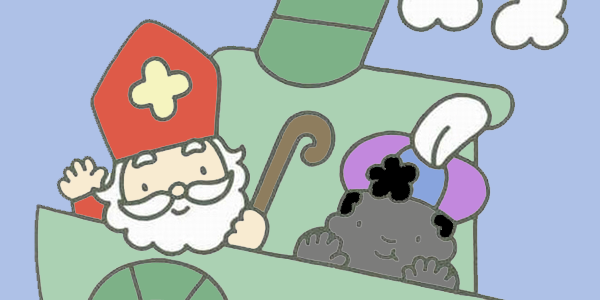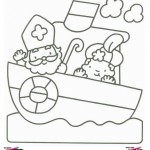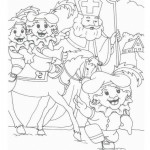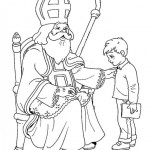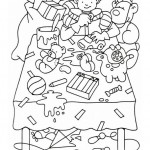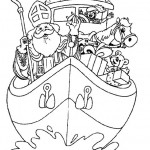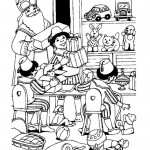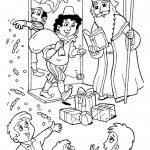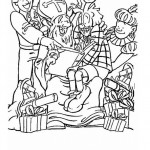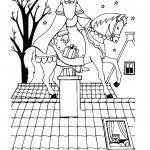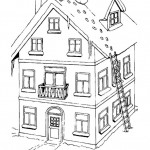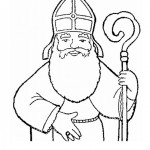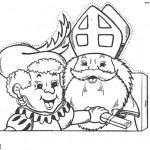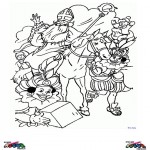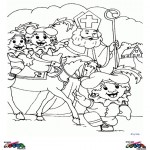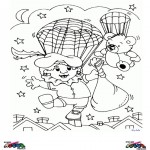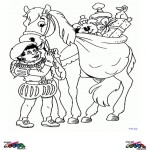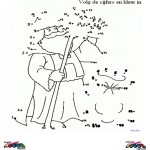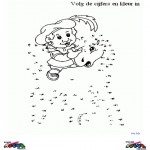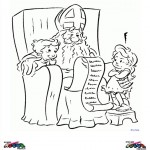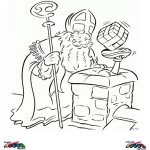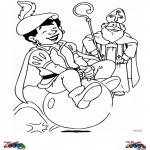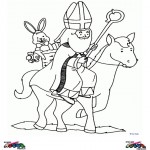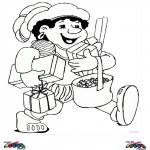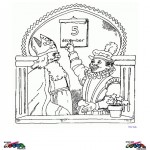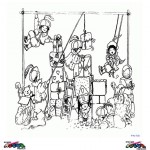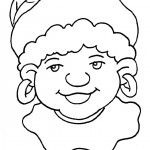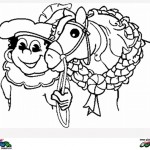Welcome to our Sinterklaas coloring pages page! On this page you will be able to find some nice Sinterklaas coloring pages as well as some very interesting information about Sinterklaas.
Are you ready to read on and start coloring our Sinterklaas coloring pages yet?
Sinterklaas (or more formally Sint Nicolaas or Sint Nikolaas; Saint Nicolas in French) is a traditional Winter holiday figure still celebrated today in the Low Countries, including the Netherlands and Belgium, as well as French Flanders (Lille) and Artois (Arras). He is also well known in territories of the former Dutch Empire, including South Africa, Aruba, Suriname, Curaçao, Bonaire, and Indonesia. He is one of the sources of the holiday figure of Santa Claus in North America.
He is celebrated annually on Saint Nicholas’ eve (5 December) or on the morning of 6 December in Belgium and Northern France. Originally, the feast celebrates the name day of Saint Nicholas — patron saint of children, sailors, and the city of Amsterdam, among others.
Although he is usually referred to as Sinterklaas he is also known as Goedheiligman or simply Sint.
Closely related figures are also known in German-speaking Europe and territories historically influenced by German or Germanic culture, including: Switzerland (Samichlaus), Germany and Austria (Sankt Nikolaus); the region of South Tyrol in Italy; Nord-Pas de Calais, Alsace and Lorraine in France – as well as in Luxembourg (De Kleeschen), parts of Central Europe and the Balkans.
Sinterklaas is assisted by many mischievous helpers with black faces and colourful Moorish dresses. These helpers are called ‘Zwarte Pieten’ (Black Petes). During the Middle-ages Zwarte Piet was a name for the devil. Having triumphed over evil, it was said that on Saint Nicholas eve the devil was shackled and made his slave. Although the character of Black Pete later came to acquire racial connotations, his origins were in the devil figure.
Sinterklaas is an elderly, stately and serious man with white hair and a long, full beard. He wears a long red cape or chasuble over a traditional white bishop’s alb and sometimes red stola, dons a red mitre, and holds a gold-coloured crosier, a long ceremonial shepherd’s staff with a fancy curled top. He carries a big book that tells whether each individual child has been good or naughty in the past year. He traditionally rides a white gray.
A Zwarte Piet (Black Pete, plural Zwarte Pieten) is a servant of Sinterklaas, usually an adolescent in blackface with black curly hair, dressed up like a 17-th century page in a colourful dress, often with a lace collar, and donning a feathered cap.
Sinterklaas and his Black Pete usually carry a bag which contains candy for nice children and a roe, a chimney sweep’s broom made of willow branches, used to spank naughty children. Some of the older Sinterklaas songs make mention of naughty children being put in the bag and being taken back to Spain. The Zwarte Pieten toss candy around, a tradition supposedly originating in Sint Nicolaas’ story of saving three young girls from prostitution by tossing golden coins through their window at night to pay their father’s debts.

